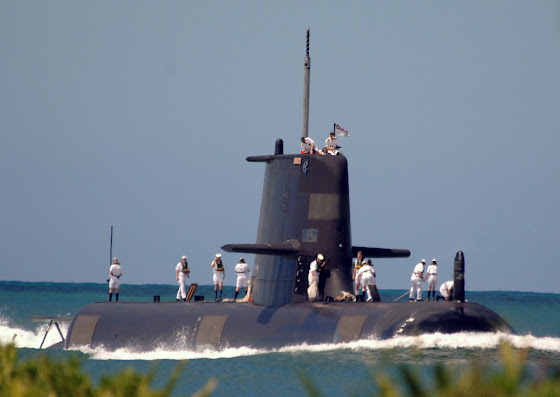 Australia wants a new Japanese propulsion system for its next generation of submarines, government officials with direct knowledge of the matter said, bolstering Tokyo's position as the likely builder of the multibillion-dollar fleet.
Australia wants a new Japanese propulsion system for its next generation of submarines, government officials with direct knowledge of the matter said, bolstering Tokyo's position as the likely builder of the multibillion-dollar fleet.Reuters reported in September that Australia was leaning towards buying 12 submarines based on Soryu-class vessels built by Mitsubishi Heavy Industries and Kawasaki Heavy Industries. The new submarines will replace six ageing Collins-class boats.
In talks since then, Canberra has said it wants a lithium-ion battery propulsion system for the submarines, two Japanese officials and one Australian official told Reuters.
Read more
There is no pure "lithium-ion battery propulsion system" for long range submarines. You would need another system to recharge the batteries. That is done by an AIP (fuel cells, sterling engines ...) or diesel engines. A conventional long range submarine does still need diesel as an energy resource.
ReplyDeleteThe use of lithium-ion batteries leads to another problem. The current diesel engines used on submarines are to weak to make full use of the faster charging possibilities. One solution was presented by DCNS with SMX Ocean: 6 diesel engines! The German solution is to use more powerful MTU 4000 engines. E.g. in use on RAAN's Armidale-class patrol boats.
Finally there is no Japanese diesel engine solution because there is no Japanese company designing such engines. Engines on Sōryū-class submarines are license build by Kawasaki just like the sterling engines. Kawasaki does not design fast running 4-stroke diesel engines.
Japan is just like Australia looking for a new propulsion system while the European companies offer a solution.